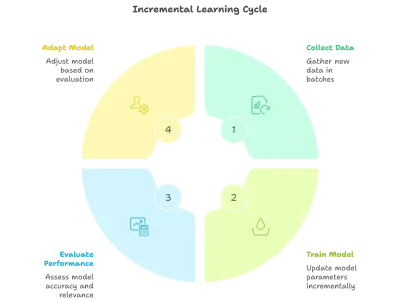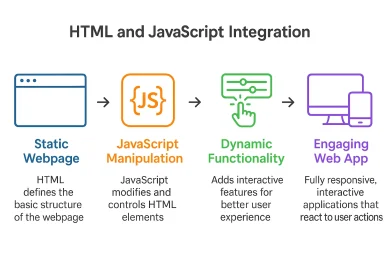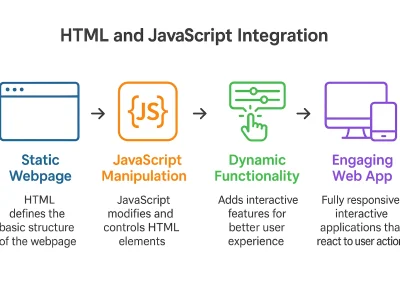Introduction
Loops are the basic concept of any programming language that involves using a similar set of code repetitively till certain conditions are met. Thus this plays an important role in the automation of repetitive tasks and handling of large-scale data processing. Python Loops are used to perform certain functions again and again. It has two types of loops, namely, For and while Loops.
For loop is used for the condition where a number of iterations are known before the loop starts. While loops are used when the number of iterations is increasing till certain conditions are met. Thus, For and while, loops are the essential tools for dynamic and efficient programming. This blog provides an in-depth understanding of Python Loops, its core concepts, advanced techniques, and real-world application of loops to help beginners master loop-based Python programming.
The Importance of Loops in Python Programming
Loops are used in automating iterations. This makes the code redundant and more readable and efficient. It is widely used in various real-world applications as follows.
- Automating Workflows: Python loops repeat certain tasks without any manual interference. Thus, ensuring smooth workflows in automation.
- Iterating through datasets: Handling large datasets manually includes more complexity in programming. These Python loops process these large data collections in data analytics and machine learning.
- Building Algorithms: Data analysis involves searching, sorting, and listing large sets of data. Python loops are helpful in building algorithms for these techniques in automation. It also creates algorithms for traversal techniques efficiently.
- Understanding loop concepts in Python programming is essential for coders to write optimized and scalable codes.
Understanding Python’s Looping Constructs
Python offers two primary looping constructs:
- For loops: It is used in the iteration over sequences such as lists, tuples, dictionaries and strings. It is mainly used when the number of iterations is finite and known before starting the loop.
- While loops: It is used when the iteration continues until dynamic conditions are True. It is ideal for the loop where the number of iterations is unknown beforehand.
Key difference: For loops are used for iterating over a sequence, whereas loops are used when iteration depends on certain conditions.
Exploring the Python For Loop: Syntax, Examples, and Use Cases
Understanding the Syntax
The syntax for Python For loop is as follows:
for value in range(start, end, iteration): #Required code to execute
The for loop in Python is a compound statement. It consists of
- Keyword “for” which starts the code block.
- Loop variable value which stores the current value in the sequence
- Keyword “in”
- Sequence for number of iterations which can be any iterable such as list, tuple, string, range.
- Set of intended code blocks that can be executed for each iteration.
Practical Use Cases
The following are some of the practical use cases for Python for loop
Iterating through lists, strings, and ranges
Code Example: courses = ["Mern", "Python", "React.js"] for course in courses: print (course) #Output: Mern Python React.js
Using “enumerate()” for indexed iterations
Code Example: courses = ["Mern", "Python", "React.js"] for index, course in enumerate(courses): print (index, course) #Output 0 Mern 1 Python 2 React.js
Combining for loops with “zip()” to process multiple sequences
Code Example
names = ["John", "Mary", "Bob"]
regdates = [25, 30, 31]
courses = ["Mern" , "Python", "React.js"]
for name, regdate, course in zip(names, regdates, courses):
print (f"{name} is enrolled on {regdate} for the {course} course")
#Output
John is enrolled on 25 for the Mern course
Mary is enrolled on 30 for the Python course
Bob is enrolled on 31 for the React.js course
Advanced Techniques
Nested for Loops for Multi-Dimensional Data
Code Example: serialno = [[1, 2], [3, 4]] for row in serialno: for key in row: print(key) #Output 1 2 3 4
Utilizing else in a for loop for post-iteration actions
Code Example:
for number in range(3):
print(number)
else:
print("Loop completed")
#Output
0
1
2
Loop completed
Python While Loop: Syntax and Use Cases
Syntax and Use Cases
while condition: #Code block to execute
Like Python For Loop, while loop in Python is organized as a compound statement. It has
- The keyword “while”
- Expression to define the condition followed by a colon :
- Set of intended code blocks that can be executed for each iteration.
Here the iterations are executed as long as the condition remains true.
Practical applications
Waiting for User Input
Code Example i = 3 while i < 20: print(i) i *= 3 #Output 3 9
Implementing Countdown Timers
Code Example: second = 5 while second > 0: print(second) second -= 1 #Output 5 4 3 2 1
Handling Infinite Loops
Some common mistakes may lead to infinite loops in the while condition, such as not updating any loop variables, incorrect while condition and so on. In order to break out safely, break statements are used in code execution blocks.
Code Example:
while True:
user_input = input("Enter 'q' to quit: ")
if user_input == 'q':
break
Advanced Techniques
Using while loops with complex conditions
Code Example: enroll = 10 while enroll > 0 and enroll % 2 == 0: print(enroll) enroll -= 2 #Output 10 8 6 4 2
Combining while with else
Code Example:
count = 3
while count > 0:
print(count)
count -= 1
else:
print("Countdown finished!")
#Output
3
2
1
Countdown finished
Python Loop Control: Using Break, Continue, and Pass
Using Break to Exit Loops
It stops the iteration prematurely when the condition is met, such as Exiting a search loop upon finding a match.
Code Example: for series in range(10): if series == 3: break print(series) #Output 0 1 2
Skipping Iterations with continue
It continues to skip the current iteration without stopping the loop. For instance, Filtering specific items in a sequence.
Code Example: for series in range(5): if series == 2: continue print(series) #Output 0 1 3 4
Placeholder Logic with pass
The pass statement in Python acts as a placeholder. It allows the code to run without any errors when an expression is syntactically required without any action. It is used in planning logic during the development phase.
Code Example: for num in range(3): pass # Placeholder for future code
Common Python Looping Challenges
Debugging Loop Errors
Loops are very powerful as they lead to infinite errors if it is not declared correctly. There are mainly two common issues
- Infinite loops: These loop conditions occur when the exit condition of the loop is never met due to the wrong loop variable. It causes the program to run infinitely.
- Incorrect conditions: If the loop condition is written wrongly, it never executes the code or runs the code an infinite number of times.
In order to avoid these two conditions, the following strategies are used
- Using print() statement inside the block to track the current variable.
- Using loop limits in order to prevent infinite execution.
- Using logical conditions to match the intended behavior.
- Pause breakpoints to analyze loop performance.
Optimising Loop Performance
Not optimized loop performance may slow down the execution so that it consumes more memory. Optimized loop performance is crucial for handling large datasets.
Tips for Handling Large Datasets Efficiently in Python Loops
- Built-in functions such as sum(), filter(), and map() can be used wherever necessary.
- Using list comprehension for concise and efficient iteration.
- Precomputing the values whenever possible to avoid unnecessary computation.
- Processing the data in chunks instead of handling large datasets in a single loop.
How Python Generators Can Save Memory and Improve Loop Efficiency
These Generators allow the data to be stored one at a time instead of storing everything in the memory.
Code Example: def generate_numbers(): for series in range(5): yield series
Avoiding Nested Loop Overhead
While handling large datasets, nested loop can significantly slow down the performance speed. There are two main techniques to avoid nested loop overhead. They are as follows
Flattening loops: Instead of nested loops, constructing the iteration in a single loop helps to improve performance.
Code Example: # Iterating through a 2D list using nested loops data = [[1, 2, 3], [4, 5, 6]] for sublist in data: for element in sublist: print(element) # Creating a flattened list using list comprehension flattened_data = [element for sublist in data for element in sublist] print(flattened_data)
Using itertools for efficient iteration: The itertools can improve efficiency by replacing nested loops.
Code Example: from itertools import product numbers = [1, 2] letters = ['a', 'b'] # Generating all possible pair combinations for pair in product(numbers, letters): print(pair)
By using these techniques, Python programs can avoid unnecessary computational overhead.
Conclusion
Mastering Python loops is essential for efficient Python programming. From basic iteration to advanced techniques, understanding loops will enhance your problem-solving skills and coding abilities. So Start Practicing today!
Whether you are a beginner or looking to gain expertise in Python language, this Python course by Tutedude will empower you with Expert training, hands-on practice and Interactive learning. Don’t miss this chance to enhance your career journey!
If you find this article helpful, bookmark and share this article with your network. Join the course now and start creating real-time applications like a Pro!





